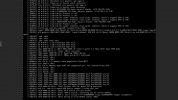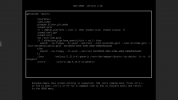I have an Ubuntu Server VM installed and configured. I have also set up that the iGPU on the host is passed through with iGVT-G. However, with this PCI passthrough, the output to console in PVE web UI is stopped when the iGPU is detected by the guest OS (after GRUB, but boots successfully, able to connect via SSH).
I have read some post, that using VirtIO-GPU for display type solved it for them, but for me, the VM it would not boot (cannot connect via SSH).
With VirtIO-GPU as display:

With default display:

Boot parameters from GRUB:

I have read some post, that using VirtIO-GPU for display type solved it for them, but for me, the VM it would not boot (cannot connect via SSH).
With VirtIO-GPU as display:

With default display:

Boot parameters from GRUB:

qm config 101:
Code:
agent: 1
balloon: 4096
bios: ovmf
boot: order=scsi0;ide2;net0
cores: 4
efidisk0: local-lvm:vm-101-disk-0,efitype=4m,pre-enrolled-keys=1,size=4M
hostpci0: 0000:00:02.0,mdev=i915-GVTg_V5_8,pcie=1
ide2: local:iso/ubuntu-22.04-live-server-amd64.iso,media=cdrom,size=1432338K
machine: q35
memory: 8196
meta: creation-qemu=6.2.0,ctime=1656331866
name: ubuntu-server
net0: virtio=6A:D9:85:EC:E1:BC,bridge=vmbr0,firewall=1
numa: 1
onboot: 1
ostype: l26
scsi0: local-lvm:vm-101-disk-1,discard=on,size=125G,ssd=1
scsi1: lightning:vm-101-disk-0,discard=on,size=850G,ssd=1
scsi2: thunder:vm-101-disk-0,discard=on,size=3200G
scsihw: virtio-scsi-pci
smbios1: uuid=78097fe9-c6d6-448d-8028-28cb450a740f
sockets: 1
tpmstate0: local-lvm:vm-101-disk-2,size=4M,version=v2.0
usb0: host=0a12:0001,usb3=1
vmgenid: ca6e94e9-e6ae-49ef-a2a1-7055017362d4
